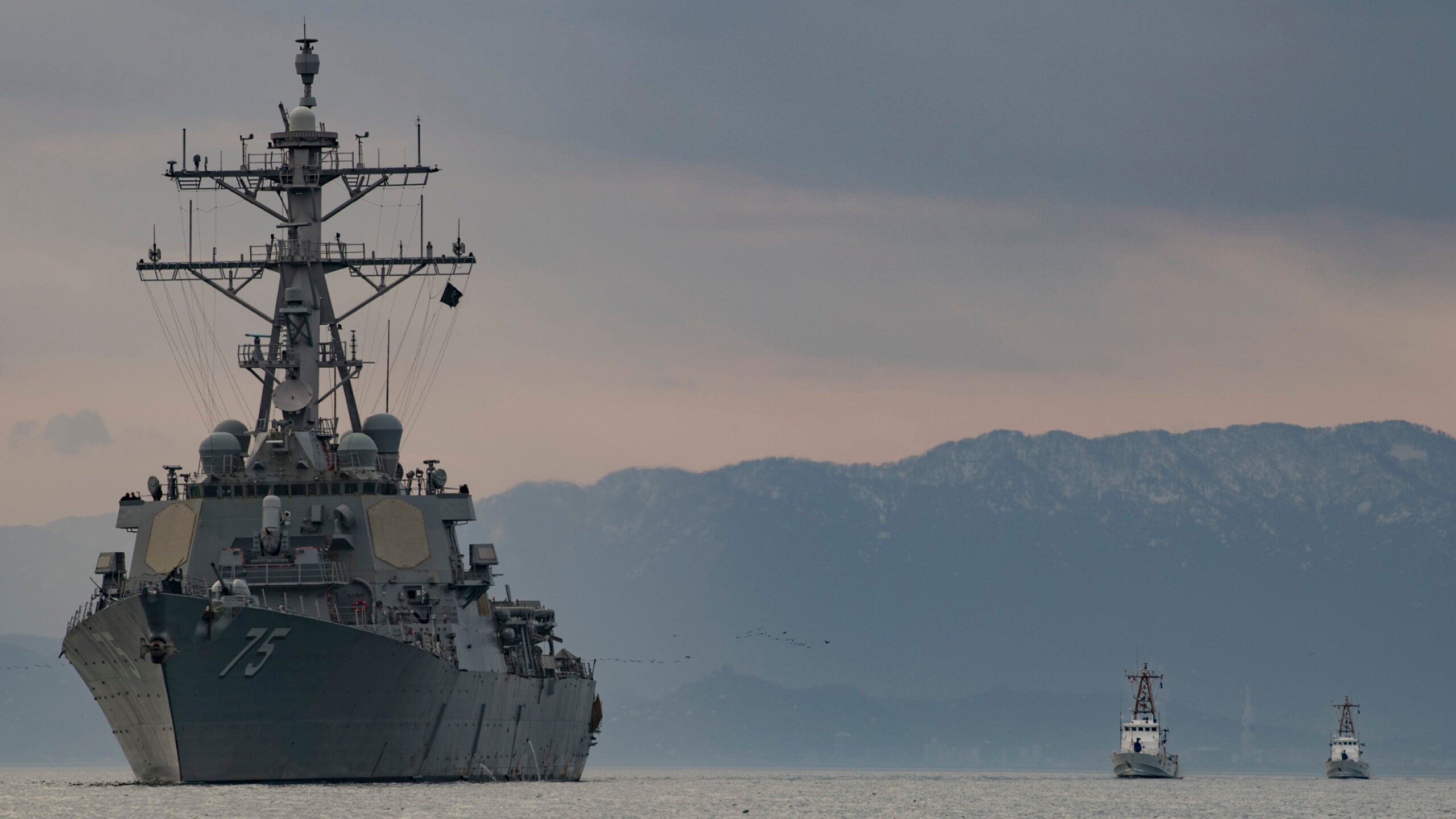A Russian Su-24 Fencer combat jet flew low over the destroyer USS Donald Cook, while missile-toting Su-30SM Flanker multirole fighters and mobile coastal defense missile systems undertook high-profile drills, in the latest series of encounters between the U.S. Navy and the Russian military in the Black Sea. All this comes amid what is reportedly the largest U.S. Navy deployment to the region in years, involving two Arleigh Burke class destroyers — the USS Donald Cook (DDG-75) and the USS Porter (DDG-78) — as well as a replenishment tanker to support them.
The incident involving the Su-24 and the USS Donald Cook took place in international waters yesterday, January 31, 2021, according to the U.S. Navy, whose 6th Fleet posted a video on Twitter.
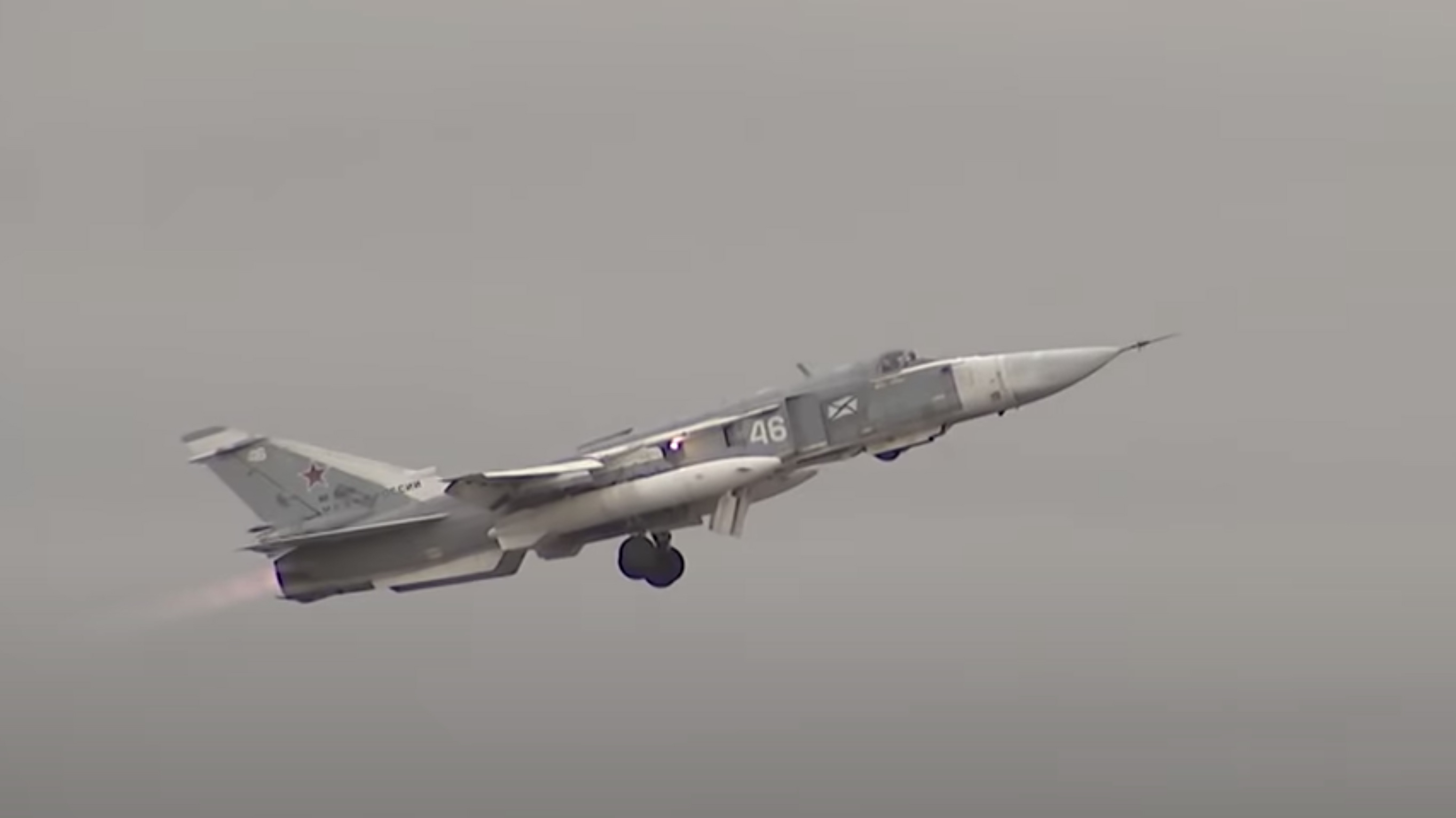
It was not immediately clear whether the Su-24 that overflew the USS Donald Cook was a Su-24M strike aircraft — which can be armed with anti-ship missiles and other guided munitions — or an unarmed Su-24MR reconnaissance variant, which are regularly used to keep tabs on other countries’ naval assets in the Black Sea and elsewhere.

The latest incident is not the first time that Russian aircraft have buzzed an American destroyer in the Black Sea in recent years. For example, the same thing happened to the USS Ross in May 2015. On that occasion, Russian media said the warship was forced to leave Russian waters, while the U.S. Navy published a video of the encounter, which again involved a low pass by a Russian Navy Su-24.
In the intervening years since the USS Ross incident, USS Donald Cook has also been on the receiving end of a low-level fly-by performed by a Russian Su-24. In 2016 the destroyer was in the Baltic Sea when Russian Fencers made multiple simulated attack runs on the ship, flying maneuvers described as “extremely aggressive.”
The U.S. Navy has so far issued no formal public complaint about the latest low-level fly-by, although the behavior of Russian military aircraft in the region has been criticized in the past. Last August, a Russian Su-27 Flanker fighter jet performed a potentially dangerous maneuver in front of a U.S. Air Force B-52H bomber flying over the Black Sea. Earlier last year, the U.S. accused Russian fighters of multiple unsafe intercepts of a U.S. Navy P-8A Poseidon maritime patrol aircraft over the eastern Mediterranean. For its part, Moscow has also lodged complaints about U.S. military activity close to its borders.
The “buzzing” of the USS Donald Cook came a day after a rumored simulated attack on the destroyer USS Porter by no fewer than six Russian jets, although this has not been confirmed by either the U.S. Navy or Russia. On this occasion, it is alleged that Su-24Ms, together with Su-30SM Flanker and Su-34 Fullback strike aircraft, plus Su-27 Flanker escort fighters, took part in complex maneuvers over the Black Sea, flying from bases in Crimea and in southern Russia.
Meanwhile, on January 27, the Russian Ministry of Defense posted a video showing Russian Navy Su-30SMs, Su-24Ms, and Su-24MRs taking part in maneuvers over the Black Sea. The defense ministry said the exercise scenario involved “detecting and disabling a simulated enemy warship carrying a sabotage team on board.”

Unusually, some of the Su-30SMs participating were armed with Kh-31 air-to-surface missiles, known to NATO as AS-17 Krypton, which are available in anti-ship and anti-radiation versions, but which are rarely observed in frontline Russian service. The anti-ship Kh-31A version has a maximum range of 31 miles and its ramjet powerplant accelerates it to a speed of Mach 3.5 at high altitude or Mach 1.8 at sea level. This weapon’s impressive performance has seen it being used in the past by the U.S. Navy, which acquired a version as a high-speed target, a saga you can read more about here.
The Russian Ministry of Defense video ended with footage of one of the Black Sea Fleet’s 3K60 Bal coastal defense missile batteries forward-deployed somewhere in Crimea. Designated SSC-6 Sennight by NATO, the Bal is a subsonic missile, broadly similar to the American Harpoon, and has a range of 75 miles. Each Bal launch vehicle can carry eight missiles, and a pair of launch vehicles can deliver a 16-missile volley against their target.

It seems very probable that the video of the exercise was intended to reinforce the fact that the presence of the Black Sea Fleet ensures that the region is home to one of the largest concentrations of anti-ship missile capabilities in the world. Should they be called upon, air-launched, surface-launched, and coastal defense missiles could transform nearly the whole of the confined Black Sea into a super anti-ship missile engagement zone at short notice.
In fact, this kind of threat was explicitly referred to by the U.S. Navy in a release about the entry of the USS Porter into the Black Sea, which described the “ultimate goal” of these latest operations being “to refine joint air defense procedures to better defend U.S. Navy ships.”
The latest U.S. Navy maneuvers in the Black Sea commenced on January 23, when the USS Donald Cook began its northbound transit from the Mediterranean Sea to the Black Sea, before being joined by the USS Porter that entered the Black Sea on January 28. This is, according to the Breaking Defense website, the largest U.S. Navy presence in the Black Sea in three years. Notable in light of the potential missile threat is the fact that both the destroyers have been equipped with RAM point-defense systems, primarily intended for use against anti-ship cruise missiles, as well as their Phalanx CIWS, for operations in very high-threat areas.
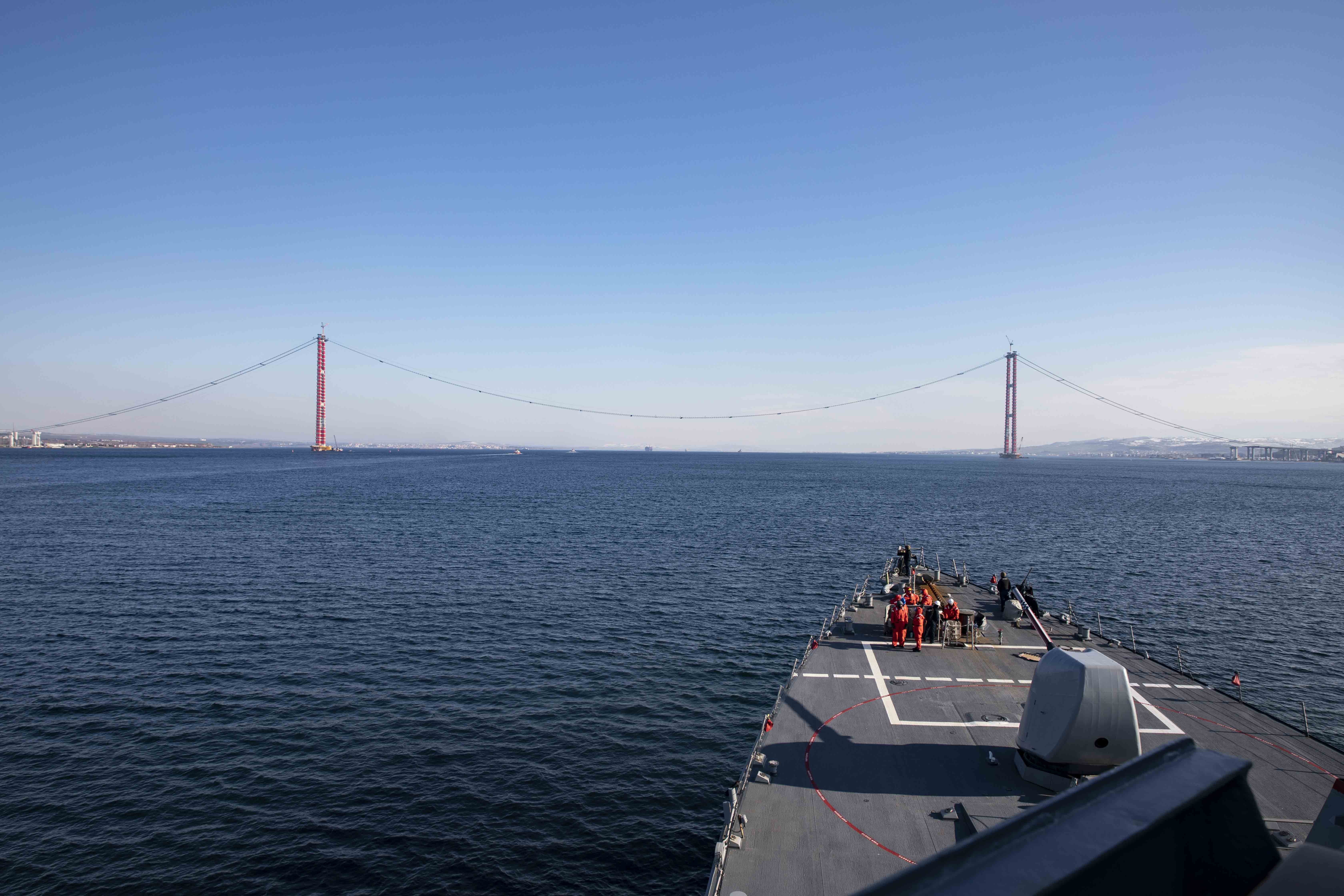
USS Donald Cook had previously entered the Black Sea on November 23, 2020, when it was escorted by the Russian Black Sea Fleet. This was the seventh time an American warship had ventured into the waters in 2020, according to the U.S. Navy.
These two warships are being accompanied by the Henry J. Kaiser class fleet replenishment oiler USNS Laramie (T-AO 203), which conducted an underway replenishment (UNREP) with the Donald Cook on January 29. This is a vital capability that ensures warships can remain on station for extended periods without having to go into port, an aspect that is all the more important during the COVID-19 pandemic.
“Taking fuel at sea is the most concrete way for us to sustain independent operations,” said Commander Matt Curnen, commanding officer of Donald Cook. “While the execution of this underway replenishment was business as usual for the crew, the greater implications for U. S. Navy operations in the Black Sea were anything but usual. It’s a new operational model in a new year.”
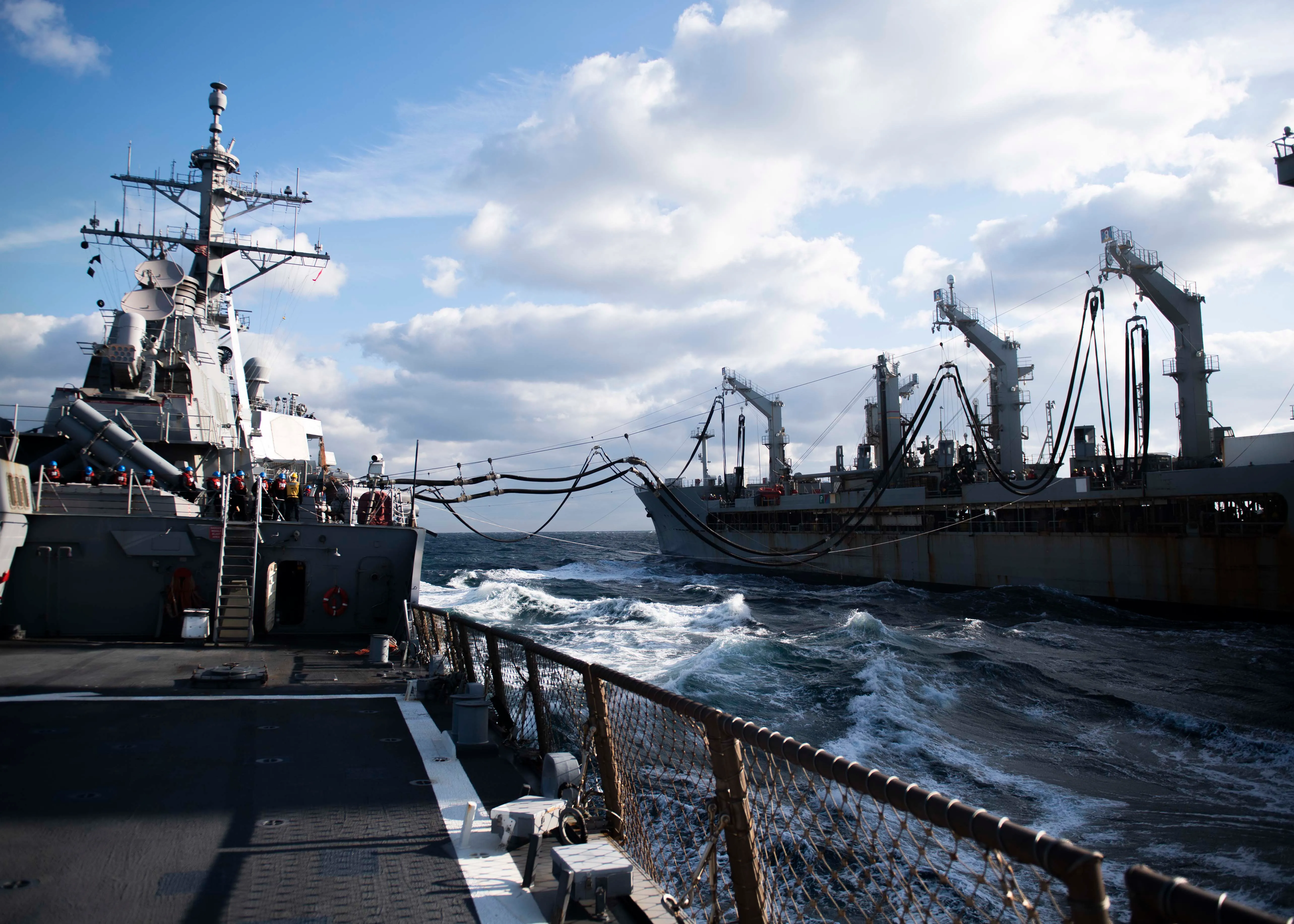
According to the U.S. Navy, the three vessels are “conducting multi-domain operations,” with other assets available in the region including a U.S. Navy P-8A from Patrol Squadron 46 (VP-46) based at Sigonella, Italy, and a NATO E-3A Airborne Warning and Control System (AWACS) flying from Geilenkirchen Air Base, Germany.
One of the stated aims of the U.S. Navy’s current Black Sea activities is to “strengthen interoperability” with Georgia and Ukraine, in addition to NATO partners on the Black Sea. Of course, both Georgia and Ukraine both have tense relations with Russia and routinely conduct military exercises with their American counterparts. These kinds of maneuvers have only increased in scale and regularity since the Russian annexation of Ukraine’s Crimea region in 2014, followed by Russia’s support of separatists in Ukraine’s eastern provinces. Among the most high-profile of these exercises is the Sea Breeze series, conducted with the Ukrainian Navy, and which normally sees a spike in U.S. Navy assets deployed in the region.
A much smaller joint U.S. Navy and Ukrainian Navy exercise also took place on January 30 and involved the USS Porter and USNS Laramie together with three Ukrainian Navy vessels: the Gurza-M class armored gunboats Kostopol and Nikopol, and the Island class patrol boat Starobilsk. A Ukrainian Navy Mi-14 Haze helicopter also took part.
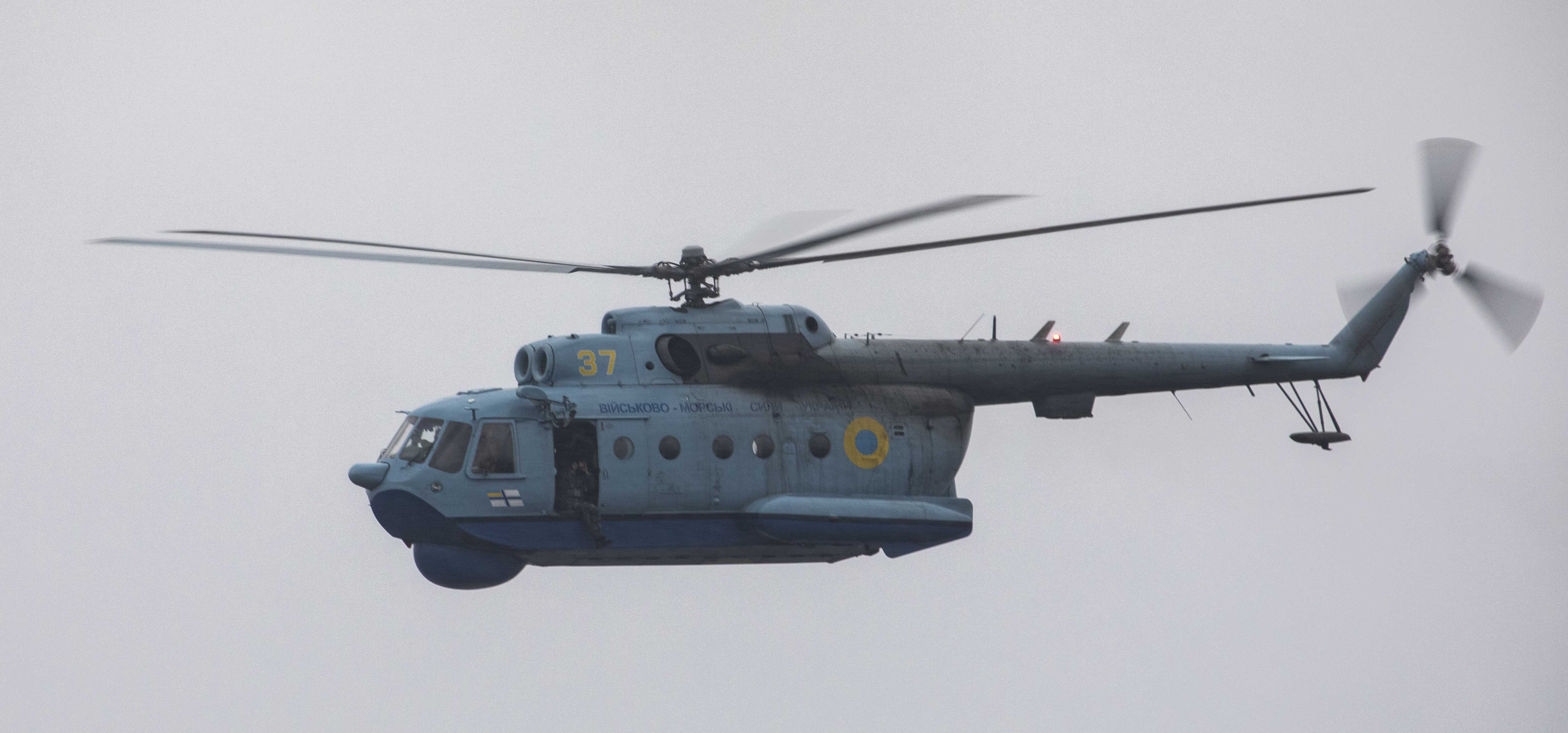
In a statement, the U.S. Navy provided more details about the specific exercise scenario:
The exercises provided the U.S. and Ukrainian Naval Forces the opportunity to practice tactical maneuvering while operating with a High-Value Unit, the USNS Laramie. The ships were able to practice coordinated small boat attack responses and surface warfare exercises while watch-standers onboard Porter received small-caliber arms training.
The U.S. Navy said that it “routinely operates in the Black Sea to reassure NATO allies and partners and ensure security and stability in the region.” These operations are governed by the 1936 Montreux convention that limits the number of foreign naval vessels that can enter the Black Sea via the Bosporus and Dardanelles straits and dictates how long these vessels can remain there. Under the convention, countries without a Black Sea border cannot keep vessels there for more than 21 days at a time, or even sail warships above a certain tonnage in or out at all.
“The Black Sea is a critical waterway for maritime commerce and stability in Europe and combined operations in the Black Sea will strengthen interoperability between NATO partners and allies, including Turkey, Ukraine, Georgia, Bulgaria, and Romania,” the U.S. Navy added.
However, Russian Deputy Foreign Minister Alexander Grushko described the ongoing maneuvers as “a disruption of regional security,” in a quote provided to the state-run TASS news agency.
Russia’s TASS news agency confirmed that the USS Donald Cook was being tracked by the Russian Navy’s Black Sea Fleet, citing Russia’s National Defense Control Center.
“The Russian Foreign Ministry has reiterated that the military presence of warships belonging to the states not bordering the Black Sea could not help facilitate stability in the region,” the agency reported.
“NATO’s decision to increase the number of stationing days of their military ship groups, the attempt to undermine the regime established by the Montreux convention… All this increases the potential for hostilities in the region,” Deputy Foreign Minister Grushko told
TASS.
For the Kremlin, the wider strategic implications of the Black Sea region are something that The War Zone has discussed in the past. However, since Moscow forcefully annexed Crimea, the Black Sea has become ever more important. For example, the Su-30SMs and Su-24Ms seen in the aforementioned Russian Ministry of Defense video are based at Saki in Crimea, which hosts the 43rd Independent Naval Attack Aviation Regiment that has single squadrons of each type.
Russia, of course, is keenly aware that three of the countries bordering the Black Sea are NATO members — Bulgaria, Romania, and Turkey — all of which were explicitly referenced in the U.S. Navy’s statement about the USS Donald Cook incident on January 31.
The enhanced presence in the Black Sea also signals U.S. intent in the region and continues the kind of approach pursued under the previous Trump administration. Last year, for example, U.S. Air Force B-1B Bones bombers flew to and from the Black Sea region to practices procedures for employing the AGM-158C Long-Range Anti-Ship Missile, or LRASM, during a training mission the implications of which you can read more about here. Last September, meanwhile, B-52s operating from the United Kingdom flew into Ukrainian airspace in what was another clear signal to Moscow.
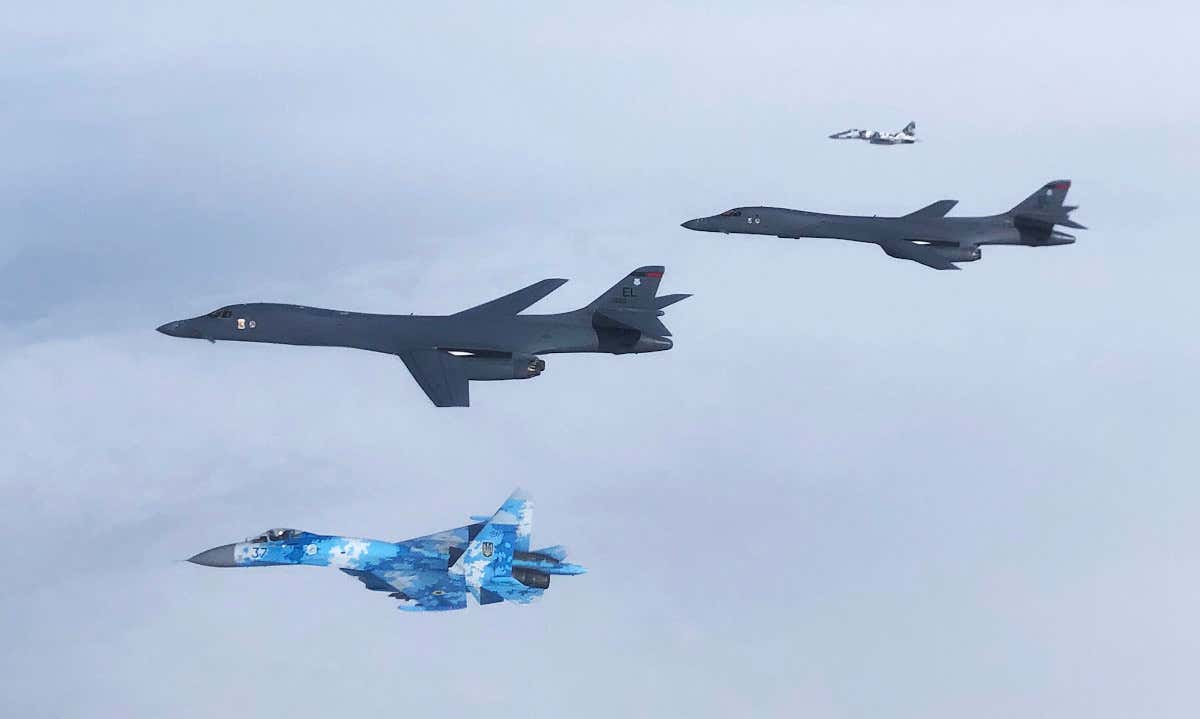
This continuation of policy was also demonstrated by President Biden during a recent high-profile phone call with Russia’s President Vladimir Putin, when the U.S. leader “reaffirmed the United States’ firm support for Ukraine’s sovereignty,” according to a White House summary. Biden’s press secretary Jen Psaki confirmed that Russian aggression in Ukraine was among the key points that Biden wanted to discuss with the Russian leader.
Overall, the U.S. Navy deployment in the region makes clear that the new Biden administration has an eye on Moscow’s activities in the Black Sea — and beyond — and that these aims are in line with those of NATO. As the USS Porter entered the Black Sea, NATO spokeswoman Oana Lungescu said that it was “strengthening support for Georgia and Ukraine, including with coast guard training and the sharing of information.”
“In response to Russia’s illegal and illegitimate annexation of Crimea from Ukraine and its ongoing military build-up in the Black Sea, the Alliance has increased its defensive presence in the region and remains strongly committed to Black Sea security,” Lungescu added.
The NATO presence in the region also includes six Spanish Air Force Eurofighter Typhoon fighter jets stationed for the first time at Mihail Kogălniceanu airbase on Romania’s Black Sea coast. These are flying patrols alongside the Romanian Air Force and will monitor Russian military aircraft operating over the Black Sea.
With high stakes on both sides, it wouldn’t be at all surprising if the current U.S. Navy operations in the Black Sea continue to trigger shows of force from the Russian military in the weeks to come.
Contact the author: thomas@thedrive.com
